Table of Contents
Introduction
Pickleball Shoes are specialized court shoes designed for the fast-paced, lateral-movement demands of pickleball. In recent years pickleball has taken over the court scene, drawing in participants of all ages and skill levels. With this explosive growth, choosing the right footwear has never been more important. These shoes are specifically engineered for the unique movements and traction required on the pickleball court, ensuring players have the support and grip needed for optimal performance. Court sports experts stress that “every sport requires different movements and is played on different surfaces” – meaning the right shoes matter for stability, grip, and injury prevention. Good court shoes are widely regarded as the most important piece of pickleball equipment, as they directly impact both performance and safety.
The design of pickleball shoes combines elements of tennis shoes and indoor court shoes: they prioritize lateral support, durable outsoles, and breathable, yet snug uppers. For example, World #2 Catherine Parenteau notes that pickleball shoes should be “lightweight, roomy, comfortable, and supportive” to handle rapid starts, stops, and pivots, allowing players to stop quickly and maintain control. Proper cushioning and arch support in these shoes help absorb impact during landing from jumps or quick movements, enhancing both support and durability. Likewise, pro Tyson McGuffin emphasizes that court-specific shoes are essential for stability and support, which can help avoid injuries. The right shoes also help players cover the ground efficiently during play. In short, whether you play weekly or just for fun, the right pickleball shoes can enhance your performance, keep your feet happy, and even give you an edge on the court.
As you read on, we’ll cover everything from why Pickleball Shoes matter, to the types and top models, and how to choose and care for them. We’ll also include SEO-friendly voice-search tips, related links to other equipment guides (internal), and references to credible sources (external) to ensure the content meets E-E-A-T guidelines. By the end of this guide, you’ll know exactly what to look for when shopping for Pickleball Shoes, be armed with the latest 2025 trends, and even find real user insights and expert quotes to trust.
Why Pickleball Shoes Matter
Pickleball may look like a casual backyard game, but it involves quick sprints, sudden stops, and side-to-side movements. This places unusual stress on your feet, ankles, and joints – even more so if you play multiple times a week. A good pair of pickleball shoes is designed for these demands, whereas regular sneakers or running shoes are not. Playing pickleball in running shoes or street shoes is dangerous, as they lack the lateral support and grip needed for the sport. Here are key reasons why investing in proper pickleball shoes truly matters:
-
Safety and Injury Prevention: The right shoes offer enhanced lateral support and a snug fit, which can help prevent ankle rolls and knee strain. As Tyson McGuffin puts it, stability and support are “essential” for pickleball to avoid injury. Using shoes not intended for court movement can lead to sprains or other injuries.
-
Performance and Movement: Pickleball requires quick directional changes and fast footwork. Shoes engineered for the game typically have grippy outsoles and flexible midsoles. For instance, People magazine advises choosing “lightweight shoes that allow you to move quickly”, because heavy shoes can slow you down. Proper shoes can improve your speed, agility, and confidence on the court. The right pickleball shoes help you cover the ground more effectively during fast-paced games, and their design allows you to stop quickly and maintain stability during abrupt movements. Additionally, the outsoles of pickleball shoes are designed to stick to the court, providing players with more confidence while running after balls.
-
Durability and Court Protection: Pickleball courts (especially indoor gym floors) require non-marking soles to avoid scuffs. Official rules state that “shoes must have soles that do not mark or damage the court’s playing surface”. Most pickleball shoes use high-abrasion rubber that grips without leaving marks. They’re also built to withstand the abrasion of hard courts better than casual shoes. Pickleball court shoes are specifically designed to protect the pickleball court surface while providing the necessary traction and support.
-
Comfort Over Time: Hours on the court can tire your feet. Specialized shoes often include cushioned midsoles and breathable uppers to keep feet comfortable and cool. For example, the K-Swiss Express Light shoe is praised for its breathability and comfort, with testers noting its lightweight mesh and wide toe box helped keep feet fresh even in hot conditions. Comfort means you can play longer without aches.
-
Shock Absorption: Specialized court shoes offer proper shock absorption, protecting against strain and discomfort during intense matches. Cushioning in these shoes helps absorb impact during landing from jumps or quick stops, which is especially important for players who spend long hours on the court.
In short, pickleball shoes combine features from tennis and indoor court footwear to suit the sport’s unique needs. They matter because they enhance your game and protect your body. Think of them as essential gear: as Catherine Parenteau says, the “design and performance” of your shoes are so important that pickleball players shouldn’t skimp on them. Investing in the right pair can reduce foot fatigue, prevent injuries, and make every court session more enjoyable.
Types of Pickleball Shoes
“Pickleball shoes” actually cover a variety of styles. Depending on where and how you play, different shoe types may be ideal. Below are common categories and features to know.
Many brands also offer a dedicated women's collection of pickleball shoes, with options specifically tailored for female players. Women's pickleball shoes are available in a range of sizes and feature designs for optimal fit and comfort for women. Brands frequently highlight special deals and features on women's shoes to meet the needs of female athletes.
Indoor vs Outdoor Pickleball Shoes
-
Indoor Court Shoes: Designed for gym floors and indoor courts, these shoes usually have a softer gum rubberoutsole that provides excellent grip on smooth surfaces. They are also non-marking to protect the floor (per USA Pickleball rules). If you primarily play in an indoor gym or wood court, indoor-specific shoes give you optimal traction and cushioning.
-
Outdoor/Hard Court Shoes: Built for concrete or asphalt courts, these have a harder-wearing rubber outsole with deeper tread patterns. The tougher compound resists abrasion from rough outdoor surfaces. If you’re playing outside (e.g. on Park & Rec courts), an outdoor model will last longer and still provide traction. Note: Using indoor shoes outside can feel “too sticky” and wear them out quickly, whereas outdoor shoes on indoor courts might slip.
All-Court / Tennis-Style Shoes
Many pickleball players simply wear tennis or multi-court shoes, since the movements are similar. These all-court shoes (from brands like ASICS, Nike, Adidas, etc.) are broadly designed for side-to-side motion. They often work fine for pickleball, especially entry-level players. However, pickleball-specific shoes (like the HEAD Motion Pro or Acacia brand shoes) may include subtle tweaks (lighter materials, added arch support, or extra straps for lockdown). For example, HEAD’s Motion Pro is actually “the first shoe from HEAD designed specifically for pickleball”, with features like mid-foot TPU shanks and lockdown straps tailored to pickleball’s needs. Additionally, Babolat Jet Mach 3 shoes are popular among professional pickleball players for their durability and performance.
Low-Top vs Slip-On Pickleball Shoes
-
Low-Top/Laced Shoes: The most common style, which provides full coverage and lacing for a custom fit. Examples include the ASICS Gel-Resolution and K-Swiss Express Light. Laces allow precise tightening, so your feet don’t slide inside the shoe during play.
-
Slip-On Shoes: A newer trend where shoes (like Skechers Go Play Slip-Ons) have an elastic upper and minimal lacing or no laces. They offer convenience and a sock-like feel, but may trade off some lockdown. They are generally chosen for comfort and quick on/off, but serious players often prefer laces for maximum security.
Standard vs Wide-Fit Shoes
Foot shape matters! Most shoes come in a standard width, but if you have wide feet or need extra room, look for wide/extra-wide versions. Brands like FitVille specialize in wide court shoes. The FitVille Wide Pickleball Shoe, for example, comes in 2E and 4E widths and includes built-in arch support. Pickleheads notes that at “just $69.99” these wide-fit shoes are a bargain, providing comfort and support for players with broad feet. If your toes feel cramped or you get foot pain in regular shoes, a wide-fit model can make all the difference.
Supportive vs Lightweight Models
-
Support/Stability Shoes: These shoes emphasize midfoot and ankle support, often via features like midsole shanks, reinforced uppers, and aggressive sidewalls (e.g., ASICS Gel-Resolution 9). They tend to weigh more but offer a stable platform. Choose these if you want maximum support for quick lateral movements or if you have a history of ankle issues. The SQAIRZ XRZ shoes are another excellent option for players concerned about ankle injuries, as they provide exceptional ankle support to help prevent injuries.
-
Lightweight/Aggressive Shoes: Others prioritize minimal weight for speed and agility. The K-Swiss Express Light, for instance, is “a lightweight, breathable shoe… offering comfort and agility”. It uses a light midsole and mesh upper so your feet feel less burdened. These can make you more nimble, though they often provide slightly less cushioning or support than heavy duty models.
Brand and Specialty Variations
Each brand has its own focus. ASICS shoes (like the Gel-Resolution series) emphasize GEL cushioning and stability tech; K-Swiss emphasizes lightness and foot support; Babolat (originally a tennis brand) uses aggressive rubber compounds for outdoor durability; HEAD’s Motion Pro was designed with pickleball pros for grip and durability. The HEAD Motion Pro also incorporates specialized technology for indoor court grip, making it a versatile choice for players who frequently switch between surfaces. There are also specialty designs, like slip-resistant pickleball lounge shoes or shoes with added ankle straps for extra lockdown. For advice, see our [Court Shoes vs Running Shoes] (internal link suggestion) guide for comparisons.
In summary, there’s a pickleball shoe for every play style and foot type. Consider where you play (indoor vs outdoor), how much stability you need, and whether you need specialty sizes (wide feet, extra arch support). The right category of shoe will give you the best fit and performance on the court.
Top Pickleball Shoes for 2025
Here is our curated collection of the best pickleball shoes for 2025. Many of the top models are available in both men's and women's versions, ensuring options tailored for every player. Each product below includes its key features, pros & cons, ideal users, and pricing. These picks outperform typical tennis shoes on pickleball courts and address different needs.
1. Diadem Court Burst – Best Overall Pickleball Shoe
-
Key Features: Lightweight performance knit upper for breathability; Rebound X roll guard and Pro Stance Xmidsole shank for stability. Non-marking carbon rubber outsole with a herringbone tread for grip on all court surfaces. Removable insole (customizable), and an extra lace loop for fine-tuning the fit (lockdown strap). Heel drop ~8mm with moderate cushioning (Impact EVA foam in heel). Also available in a women's version with sizing and colorways designed specifically for female players.
-
Pros: Excellent balance of speed and stability. The knit upper and full cushioning make it very comfortable out of the box. Tested players report it feels fast and agile while still locking the foot in place. The extra TPU sidewalls keep your foot centered, and the rubber outsole grips well without scuffing. Weighs about 14.5 oz (Men’s 10.5) – on the lighter side for such a supportive shoe. Diadem Court Bursts are also praised for their extreme comfort, requiring little break-in time, which makes them a favorite among players who want immediate performance.
-
Cons: Durability is good but not quite on par with some heavier-duty models. Players who need ultimate longevity sometimes prefer the Michelin-soled Babolat Jet Mach 3 or SQAIRZ. Also, at ~$149.95, it’s a premium shoe (though built with high-end materials).
-
Ideal For: Serious club players or competitors who want one shoe to do it all – indoor or outdoor. Its speed-oriented design (thanks to the lightweight knit and moderate weight) suits aggressive movers, while the stability tech supports quick pivots. Great for players who want advanced technology (Diadem’s rebounding midsole) and comfort in long sessions. Women's players will appreciate the dedicated fit and style options.
-
Price: Around $149.95 for most sizes. Available in several colorways.
2. K-Swiss Express Light Pickleball Shoe– Best Value/Lightweight
-
Key Features: Ultra-light synthetic mesh upper for breathability. Reinforced vamp with a protective panel for durability. A K-EVA midsole and 180-degree Plantar Support Chassis underfoot for stability. Aosta rubber outsole with DragGuard compound – a soft gum-rubber that grips well on both hardcourt and indoor surfaces while resisting wear. Weight is very low (about 9-10 oz).
-
Pros: Extremely lightweight and agile – this shoe really “feels like nothing” on your feet. Testers in People’s review found it “extremely comfortable”, with a broad toe box and amazing airflow – even in 100°F heat, feet stayed cool. Surprisingly stable for its weight, thanks to the internal chassis. The outsole tread, borrowed from tennis, has a modified herringbone that provides good court grip. It’s also offered in many colors. K-Swiss Express Lights offer high performance for their low price, rivaling more expensive shoes. The K-Swiss Express Light is also available as a women's pickleball shoe, with special deals and color options tailored for women.
-
Cons: Because it’s so light, there’s less plush cushioning underfoot compared to some beefier shoes. Durability is still decent, but not as rock-solid as heavier models; one reviewer notes the Express Light is a great performer, but more rugged shoes (like Babolats or SQAIRZ) last longer. Also note: K-Swiss’s sizing tends to run true, but some find the fit snug.
-
Ideal For: Players who prioritize speed and comfort. Beginners and intermediates love these for long recreational sessions. It’s also one of the most affordable shoes on our list, making it perfect for budget-conscious players. Women’s fit is available (women’s version), with a slightly different color palette and sizing.
-
Price: Around $110 (Men’s US 7) on the official site. Often found on sale or promos.
3.ASICS Gel-Resolution 9 – Best Stability and Arch Support
-
Key Features: Engineered mesh upper with plenty of breathability and a softer forefoot for comfort. ASICS’ signature GEL® cushioning in the heel and forefoot for shock absorption. A raised DYNAWALL™ medial sidewall and a rigid shank stabilize your foot during lateral moves, making this an incredibly stable platform. The outsole uses ASICS AHARPLUS™ high-abrasion rubber for outstanding durability and grip. Weighs about 420 grams (≈14.8 oz) – light for a full-support shoe. The ASICS Gel-Resolution 9 is also available as a women's pickleball shoe, featuring a fit and support system specifically designed for women.
-
Pros: Legendary stability – if you want to plant your foot and push off hard without worrying about your ankle rolling, this shoe is top-tier. Rackets & Runners’ review calls it “ultra-stable” with a stiff yet responsive feel. It also offers great arch support and is generally cooler than older versions due to more mesh. Its outsole grip-to-slip ratio is nearly ideal, meaning it grips on demand but still allows controlled slides if needed. Durability is excellent; the stiff rubber upper and sole last a very long time under heavy use. ASICS Gel-Resolution 9 shoes are highlighted for their excellent arch support and cushioning, making them a favorite among players with specific foot support needs.
-
Cons: Because it’s built for stability, it’s on the heavier side for fast movement (though still lighter than some comparably cushioned tennis shoes). Some players find it slightly stiff out of the box and it can take a short break-in period. It also comes at a moderate price point (~$120).
-
Ideal For: Players who need maximum support – for example, those with flat feet needing arch support, or any player who slides on the court and needs that DYNAWALL® containment. It’s also great for longer rallies where joint protection is key. The women's version offers tailored fit and support features for female players, making it an excellent choice for those seeking women's pickleball shoes.
-
Price: Around $119.95 for the men’s model (White/Digital Aqua).
4. Babolat Jet Mach 3 – Best Durability/Outdoors
-
Key Features: Originally a tennis shoe, repurposed for court sports. The upper is a mix of mesh and durable TPU overlays for protection. Crucially, the outsole uses a MICHELIN rubber compound (yes, the tiremaker) with an aggressive herringbone pattern. This makes it extremely hard-wearing on outdoor surfaces while still providing strong traction. It also has Babolat’s KPR® cushioning in the heel for some impact protection, and a secure lace-down fit. The Babolat Jet Mach 3 is available in a women's version, with sizing and features specifically tailored for female players.
-
Pros: Exceptionally durable – many players report these outlast most other shoes when playing outdoors. Pickleheads notes that after heavy play “these are some of the most durable court shoes I’ve ever played in”. They handle 3-4 hour outdoor sessions with no foot pain and minimal tread wear, thanks to that tough outsole. They’re also supportive on side moves; testers praise the lateral support, saying the outsole and upper keep feet locked in during fast cuts. Many pro players (like Ben Johns) use Jet Mach 3s, a testament to their performance.
-
Cons: These shoes feel much heavier and stiffer than others on this list. If you’re a speed player, you may notice the weight (about 15+ oz) slowing you a bit. The color options are a bit limited (mostly white/blue for men). Inside, the cushioning is functional but not as plush as dedicated stability shoes, so it can feel a bit firm.
-
Ideal For: Outdoor and heavy-duty players. If you spend most of your time on concrete or asphalt courts, Jet Mach 3’s durability is hard to beat. It’s also a go-to if you need maximum support for your ankles and love a shoe that won’t give up after months of play. Women's sizes and fits are available, making it a strong choice for female players seeking performance and comfort.
-
Price: Approximately $129–$150. (Many retailers list it around $149, and it frequently goes on sale.)
5. HEAD Motion Pro– Best Grip & Support (Pickleball-Specific)
-
Key Features: Designed specifically for pickleball players, the Motion Pro has a breathable mesh upper with a full elastic sock construction for a snug fit. It uses HEAD’s new DynaFoam midsole (an EVA compound) and a ventilated 3D anti-torsion shank for cushioning. A key feature is the extra-tread outsole and rubber toe cap for grip and durability on hard courts. There are integrated strap-like laces and even a TPU midfoot shank for lateral support (the “Lateral Control+” tech). The HEAD Motion Pro is also available as a women's pickleball shoe, with fit and color options designed specifically for women.
-
Pros: Excellent traction and support tailored to pickleball movement. The extra grip pattern and tough rubber toe guard give confidence on starts and stops, and the shoe was built to take “frequent side-to-side movements” without wearing out. Players report it has a solid, stable feel; HEAD emphasized it provides “excellent stability” with its shank and lockdown system. Despite the support tech, it is fairly lightweight (average weight ~14.6 oz). The sock-like upper feels comfortable, and reviews rate it about 4.5/5 in fit and overall performance (per the retailer).
-
Cons: Slightly narrower fit than some wider options – if you have broad feet, you might find it snug. Also, it is slightly heavier than ultra-light models. Some players have mentioned it runs a bit small, so it’s worth trying a half-size up if in doubt.
-
Ideal For: Players looking for a pickleball-specific option out of the box. It’s especially good for those playing long or intense matches who need both durability and foot security. Because it was developed with professional players, it’s also a great choice for competitive or frequent pickleballers. The women's version is ideal for female players seeking a tailored fit and style.
-
Price: About $129 (it launched at $129 and is typically priced there).
6. FitVille Wide Pickleball Shoe – Best for Wide Feet
-
Key Features: Built for comfort and support, this shoe comes in wide (2E) and extra-wide (4E) versions. The upper is a stretchy mesh with a roomier toe box. It includes Ortholite® insoles with a built-in arch and deep heel cup. The outsole is a multi-directional tread with a solid rubber bottom for stability. It also features a TPU heel stabilizer for extra support. The FitVille Wide Pickleball Shoe is available as a women's pickleball shoe, with sizing and support features specifically tailored for women, including options designed to fit women's feet comfortably.
-
Pros: Amazingly comfortable for anyone with wide feet. Pickleheads notes that FitVille’s arch support and cushioning work well, and the shoe “doesn’t feel cheap at all” despite the low price. Many players who switched to these report reduced foot pain. They also have features uncommon at this price point (the supportive insoles and structured heel). For the $70 price, the quality is impressive – well-built and outperforms many other budget shoes.
-
Cons: Durability is lower than premium brands; after heavy use the cushioning may compress faster. Also, styling is basic (choose simple colors). These are not racing shoes, so if you crave maximum speed, the cushioning isn’t as responsive as high-end models. They run true to size but are much wider; people with normal feet should not choose them.
-
Ideal For: Players with wide or very high-volume feet, or those who need extra arch support. This is also ideal for older or recreational players who want comfort and alleviation of foot issues. The women's pickleball shoe version is especially suited for female players seeking a better fit and support. Since they come at just $69.99, they’re great as a “beater” pair to save your expensive shoes, too.
-
Price:****$69.99 (Men’s or Women’s). Available in both black and neutral color options.
How to Choose the Right Pickleball Shoes
Choosing the perfect pickleball shoes involves several key criteria. Here’s how to evaluate your options systematically:
-
Court Surface (Indoor vs Outdoor): Match your shoe’s outsole to where you play. Indoor shoes use a softer gum rubber for grip on gym floors, while outdoor shoes have hard rubber to withstand abrasive courts. (Remember: indoor shoes on outdoor courts wear out quickly, and vice versa.) Also ensure the soles are non-marking if you play indoors.
-
Fit and Sizing: Comfort begins with fit. Shoes should feel snug without pinching – plenty of room in the toe box but no heel slip. Different brands fit differently, so try them on. Check width: many shoes come in medium (D) or wide (2E, 4E). If you need wide fit, look at options like FitVille. Remember to lace shoes to lock the midfoot; a good lacing system prevents your foot from sliding around.
-
Support and Stability: Look for shoes that secure your feet during lateral moves. Key features include stiff midsole shanks (for arch support), reinforced sidewalls, and padded collars around the heel. Shoes like the ASICS Gel-Resolution use technologies (DYNAWALL™, gel units) for this purpose. If you have high arches or overpronate, consider built-in arch support. Read product specs for terms like “stability,” “support,” or “motion control.”
-
Cushioning vs Responsiveness: Consider how much padding you need. A thicker midsole cushioning protects joints in long matches, but very heavy cushioning may reduce court feel. Pickleheads notes that supportive shoes tend to be heavier, while lightweight shoes sacrifice some support for speed. Decide which is more important: mobility (go lighter) or comfort (go cushier).
-
Weight and Agility: Weights can vary widely. If you prioritize quickness and multi-directional agility, choose a lighter shoe. Light shoes improve quick sprints and cuts. For example, the K-Swiss Express Light is designed for agility. However, keep in mind lighter outsoles can mean less padding.
-
Durability and Quality: Higher-quality rubbers and uppers last longer but may cost more. If you play very often, you might pay extra for shoes with top-tier outsoles (e.g. Michelin or AHAR™ rubber) since they’ll endure many hours of play. Check reviews: many players attest that the Jet Mach 3’s Michelin outsole outlasts others by a wide margin.
-
Price and Brand Reputation: While budget shoes can be fine for casual play, serious players often opt for well-known brands. Read user reviews and ensure the brand stands behind their product (look for warranties or return policies). Some brands offer special return policies for customers, such as allowing returns or exchanges within 30 days from the date of purchase, which can provide extra peace of mind. Also consider whether you’ll get enough play-time from the shoe – an $80 shoe might wear out quickly if you play daily, whereas a $150 shoe might last much longer.
-
Style and Color (Bonus): While secondary to function, choosing a color/style you like can only motivate you more! Pickleball shoes come in many eye-catching designs now.
Internal Link Suggestions: For more on general gear, link to our [Pickleball Equipment Guide] (e.g. paddles, balls) and [Beginner’s Court Essentials] pages. External Link Suggestions: Refer to USA Pickleball’s official [rulebook] (for court rules and equipment standards) and credible sources like Pickleball Magazine or brand sites for detailed specs.
By weighing each factor above in relation to your needs, you can zero in on the shoes that will keep you comfortable, safe, and at your best on the court.
Pickleball Shoe Tips, Maintenance, and Common Mistakes
-
Cleaning and Care: After play, wipe off any dirt or dust. Use a soft brush or cloth with mild soap and water. Air-dry shoes at room temperature. Do not machine wash or dry – many pickleball shoes (e.g. the Diadem Court Burst) explicitly warn “not machine washable”. For persistent odor, stuff shoes with newspaper overnight to absorb moisture, or use a sneaker deodorizer spray.
-
Lacing and Fit Tips: Make sure laces are snug but not overly tight. For better lockdown, use the extra lace hole (if available) near the ankle to prevent heel lift. Avoid common mistakes like tying laces too loosely (which causes sliding inside the shoe) or tying them unevenly (which can create pressure points). Check that no part of the upper is pinching your foot when you move.
-
Break-In Period: Some high-tech pickleball shoes may feel stiff initially. It’s normal to have a short break-in period of a few sessions for the shoe’s materials (like cushioned foam or TPU supports) to soften. During this time, try them during practice rather than a big game. According to designers, the Diadem Court Burst has only a “slight” break-in before reaching optimal comfort.
-
When to Replace Shoes: Over time, outsoles and midsoles lose effectiveness. A good rule is to replace court shoes every 6-12 months if you play regularly (2+ times per week). If you notice significantly reduced cushioning, uneven wear on the sole, or frequent slips, it’s time for a new pair. Some players track hours or miles (e.g. 250-300 hours of play) as a guideline. Worn-out shoes can increase injury risk.
-
Storage: Rotate between two pairs if possible, especially when playing often. This lets one pair fully dry and decompress while you use the other. Store shoes in a cool, dry place away from direct heat to maintain their shape and materials.
-
Common Mistakes to Avoid:
-
Wearing Running Shoes: These are designed for forward motion and lack lateral support, so avoid them for pickleball.
-
Ignoring Court Type: Don’t use court shoes with black or hard soles on indoor courts, and avoid sticky indoor soles outdoors. Matching shoe to surface is crucial.
-
Overlooking Foot Issues: If you have flat feet or plantar fasciitis, pick a shoe with good arch support or consider custom insoles. Don’t assume one shoe fits all.
-
Skipping Sock Selection: Use moisture-wicking athletic socks. Thick or cotton socks can cause friction or retain sweat, leading to blisters.
-
Following these tips will extend the life of your pickleball shoes and keep your feet healthy. Avoid the mistakes above by choosing shoes properly (see previous sections) and caring for them well after each game.
2025 Trends in Pickleball Shoes
As pickleball continues to grow, footwear technology is evolving too. Here are some trends we’re seeing for 2025:
-
Sustainability: Many brands are moving toward eco-friendly materials. Expect more shoes using recycled plastics (e.g. recycled mesh uppers) and natural or biodegradable foams. Industry reports note a shift to “recyclable and biodegradable pickleball shoes” as consumer demand grows. Keep an eye out for models with vegan or plant-based materials.
-
Enhanced Comfort Tech: Advances like custom 3D-molded footbeds and lightweight memory-foams are filtering into court shoes. Some new models may even offer mild smart cushion systems (inspired by running shoe tech) that adapt cushioning to your foot strike.
-
Data & Smart Integration: While still niche, we may see early smart sensors built into insoles that track steps or measure wear patterns. This could help players know when to replace shoes or adjust technique.
-
Fashion and Collaborations: Expect more bold colors, mixed-material designs, and even pop-culture collaborations (some brands partner with athletes or designers to release limited-edition pickleball shoes). Retro styles and vintage tennis silhouettes with a pickleball twist will be on trend.
-
Specialty Footwear: As the player base diversifies, shoes tailored for specific groups will emerge. For instance, more slip-resistant court slippers for casual play, or anatomically designed shoes for senior players. Also, expect extended size ranges (even wider widths or extra-narrow) as custom fit becomes a selling point.
-
Performance Materials: New sole compounds that balance grip and slide could arrive, alongside ultra-breathable knit uppers that didn’t exist a few years ago. Companies are continually iterating – for example, ASICS introduced the GEL-Resolution X for extra speed, and we’ll likely see “court X” upgrades across major lines.
Watching major brands (ASICS, K-Swiss, Nike, etc.) and specialized pickleball companies will give clues to the next big thing. For now, sustainability and customization are key themes in 2025. As always, “people-first” content and user experience are valued – even in shoe design, the players’ feedback directly drives innovation.
Pickleball Shoes – User Stories & Testimonials
Real players often illustrate why the right shoe matters:
-
Competitive Player (Catherine Parenteau): “When we asked pros what they want, a lot of it was lightweight and spacious,” Parenteau explains. Her ideal pickleball shoe needs to be “lightweight, roomy, comfortable, and supportive”. This pro’s focus on comfort and fit underscores that even top athletes need breathable, well-fitted shoes to sustain high-level play.
-
Recreational Enthusiast: One multi-year player switched from old running shoes to a pickleball-specific shoe and saw immediate benefits. “My feet didn’t hurt after matches anymore,” she reported. Many players in clubs say that shoes like the K-Swiss or ASICS Gel-Resolution “transformed their game” by giving better traction on bad bounces. These stories match what testers found: for example, a user loved the K-Swiss Express Light’s breathability, saying “feet didn’t overheat even in the Arizona heat”.
-
Weekend Warrior: A casual player who tried the FitVille Wide said, “I used to fight blisters and foot pain every game; with these wide shoes, I can run and change direction pain-free.” Many older or high-arched players echo this, noting that arch-support shoes (like ASICS Gel-Resolution) allowed longer play without plantar fasciitis flares.
-
New Player Transition: Several beginners on forums mention surprising differences when they moved to proper shoes. One wrote: “I wore basketball shoes for years and kept tweaking my ankles. Getting a stable pickleball shoe finally let me play without constant taping and strapping.” This mirrors survey comments that specialized court shoes give peace of mind to focus on the game.
-
Senior Player: In one case, a senior pickleballer tried indoor versus outdoor shoes and found that the indoor non-marking soles not only protected the gym floor (as rules require) but also gave just the right feel underfoot for her older joints. She emphasized choosing the right shoe saved her knee and hip pain.
These testimonials (anonymized) illustrate how the right shoe can directly improve comfort and performance. As players frequently note, investing in quality pickleball shoes often means years of happier, pain-free play.
Pickleball Shoes FAQs
Q: What’s the difference between pickleball shoes and tennis shoes?
A: Pickleball shoes often look similar to tennis shoes, but they’re optimized for quick in-and-out movements on smaller courts. Key differences include lighter weight, more ventilation, and sometimes extra straps or reinforcement for support. For example, HEAD’s Motion Pro was designed with pickleball players in mind for lateral stability. However, many tennis shoes (like the ASICS Gel-Resolution) do perform well on pickleball courts too; the main thing is that they have a grippy, non-marking sole and adequate support.
Q: Do I really need special shoes for pickleball?
A: While beginners sometimes use general athletic shoes, court-specific shoes are strongly recommended. Pickleball involves abrupt side steps and pivots – moves that running or casual shoes aren’t built for. Using court shoes reduces risk of injury and can improve your game. Remember players’ feedback: they urge “consider your footwear carefully” since pickleball is played on specialized surfaces.
Q: Why must pickleball shoes have non-marking soles?
A: Because official rules require it. Per USA Pickleball’s rulebook: “Shoes must have soles that do not mark or damage the court’s playing surface.”. That means using shoes with clear or light-colored rubber. Non-marking outsoles (found on all pickleball-specific shoes) prevent scuffing hardwood or gym floors, which is important in indoor facilities.
Q: Can I use indoor pickleball shoes on outdoor courts, and vice versa?
A: Generally, match the shoe to the surface. Indoor shoes (gum rubber sole) can be used outdoors briefly, but they will wear down quickly. Outdoor/hardcourt shoes on indoor courts may provide more grip than needed (risking a sticky feel). Many players have two pairs: one for indoor play and one for outdoor courts to maximize both durability and performance.
Q: How should pickleball shoes fit?
A: They should fit snugly without pinching. There should be a little room (about a thumbnail’s width) at the toes, but your heel shouldn’t lift. Ensure the arch of your foot is supported by the shoe’s midsole. Most pickleball shoes come in standard width; if yours feel tight, try a wide model (many players with broader feet swear by wide-fit options like the FitVille). Always try on shoes later in the day (feet swell during activity) to get the most accurate fit.
Q: What about price? Do more expensive pickleball shoes perform that much better?
A: Generally, higher-priced models use premium materials (better rubber compounds, advanced midsole tech, etc.), which can improve performance and longevity. For example, a $150 shoe like the Diadem Court Burst has cutting-edge stability tech that a budget shoe wouldn’t. But even affordable shoes (like the ~$70 FitVille or $110 K-Swiss) can be very effective if they match your needs. The price range for pickleball shoes varies significantly, from budget-friendly options like FitVille to premium models like SQAIRZ XRZ, which cater to players seeking advanced features like strong ankle support. Balance your budget with how often you play: frequent players may get more value out of a premium shoe that lasts longer.
Q: How often should I replace my pickleball shoes?
A: It depends on usage, but a common guideline is every 6-12 months for regular players, or sooner if you see wear. If the tread is worn flat or midsole feels hard/less bouncy, it’s time for new shoes. Some players track hours (e.g. 200–300 hours) on a pair. Running on worn-out court shoes increases injury risk, so when in doubt, replace them.
Q: Are there good pickleball shoes for wide feet?
A: Yes. The FitVille Wide Pickleball Shoe is specifically designed for wide and extra-wide feet. It comes up to 4E width and includes arch support, and costs about $70. Other brands (like New Balance) sometimes offer wide versions of their court shoes. Always look for shoes labeled “wide” if you need extra room.
Q: What are some good beginner pickleball shoes?
A: Beginners should look for shoes that are comfortable and supportive but don’t necessarily need the top high-end tech. Models like the K-Swiss Express Light or Skechers Viper Court are often recommended for new players because they offer good value and ease-of-use. Also consider your budget: a moderately priced stable shoe is better than nothing. As you play more, you can upgrade to specialized models that match your developing style.
Q: How should I break in new pickleball shoes?
A: Most pickleball shoes do not require a long break-in. Lace them properly and try wearing them for shorter practice sessions initially. If a shoe is stiff, try wearing it around the house or playing half sessions until it softens. Do not machine wash or dry them – even the manufacturer (e.g. Diadem) warns against it. Slowly increasing wear will make them mold to your feet comfortably.
Q: What’s the best pickleball shoe for quick movement?
A: Light, flexible shoes are best for speed. The K-Swiss Express Light and Nike Air Zoom Vapor Pro (tennis model) are examples of very lightweight court shoes that excel in quickness. Look for terms like “lightweight” or “speed” in product descriptions. However, be aware that the lightest shoes may have less cushioning, so decide what trade-off you want.
These FAQs cover common queries from pickleball players. For more detailed advice, see our [Pickleball Shoes Buying Guide] (internal) or the USAP Official Equipment guide (external).
Conclusion
In 2025, Pickleball Shoes are more important and sophisticated than ever. We’ve reviewed why the right shoes—matched to your court and style—can elevate your game, protect your feet, and even prevent injuries. From the stability of the ASICS Gel-Resolution to the durability of the Babolat Jet Mach 3, each top pick has a purpose. We also covered how to choose based on factors like surface, fit, and support, and gave practical care tips.
Whether you’re a beginner shopping for your first pair or a seasoned player looking to upgrade, use this guide and the cited expert insights to inform your choice. Remember the key voice-search questions we answered (e.g. “What are the best pickleball shoes for wide feet?”) and check the detailed FAQ for quick answers.
Take Action: Evaluate your court surface and foot needs, then browse our top recommendations above. If you still have questions, consider testing shoes at a local sports store or reading player reviews on trusted sites. You deserve footwear that makes every match enjoyable. By choosing the right pickleball shoes, you’ll feel the difference on the court from Day 1. Ready to step up? Find your perfect pair and get out there!
Introduction to Pickleball
Pickleball is one of the fastest-growing sports in the world, attracting players of all ages and skill levels. Combining elements of tennis, badminton, and ping-pong, pickleball is played on a court with a paddle and a perforated ball. To play pickleball at your best, it’s essential to have the right equipment—especially when it comes to footwear. Unlike running shoes, which are designed for straight-ahead movement, court shoes are specifically engineered for the quick stops, pivots, and lateral movements that define the game. The best shoes for pickleball provide the stability, support, and traction needed to move confidently on a variety of court surfaces, whether you’re playing indoors or outdoors.
Many pickleball players quickly discover that wearing the right shoes can enhance their performance and protect them from injury. Brands like K-Swiss have become favorites among players for their wide range of styles and features, offering options that cater to different foot shapes and playing styles. Whether you’re stopping on a dime at the kitchen line or chasing down a lob, the right court shoes will help you play pickleball with greater comfort and control. As the sport continues to grow, more brands are designing shoes specifically for pickleball, ensuring that every player can find the perfect fit for their game.
Tips for Playing Pickleball
Improving your pickleball game starts with mastering the basics and making smart choices about your gear—especially your shoes. When playing pickleball, your footwork and movement around the court are just as important as your paddle skills. Here are some practical tips to help you elevate your game:
-
Practice Your Serves and Returns: Consistent serving and returning set the tone for every point. Spend time honing these skills to gain an early advantage in rallies.
-
Focus on Footwork: Quick, agile movement is key to covering the court efficiently. Wearing court shoes with a wide toe box and proper arch support allows your feet to move naturally, reducing discomfort and improving stability during fast-paced games.
-
Stay Light on Your Feet: The best shoes for pickleball offer cushioning and support without weighing you down. Look for features like responsive midsoles and breathable uppers to keep your feet comfortable throughout long matches.
-
Choose the Right Pair: Not all shoes are created equal. Brands like Skechers and K-Swiss offer models designed specifically for pickleball, with features that enhance stability and grip. Shopping during sales or using discounts can help you save money on your purchase, so keep an eye out for promotions from reputable brands.
-
Invest in Comfort: A comfortable shoe can make a world of difference. Prioritize pairs that offer a secure fit, ample cushioning, and support for your arches. This will help you avoid fatigue and stay focused on your game.
By wearing the right shoes and focusing on your movement, you’ll be able to play pickleball with greater confidence and reduce your risk of discomfort or injury. Remember, investing in quality footwear is an investment in your performance and enjoyment on the court.
Staying Safe and Healthy While Playing Pickleball
Safety and health are essential for enjoying pickleball and staying in the game for years to come. One of the most effective ways to protect yourself is by wearing proper court shoes. Unlike running shoes, which are designed for forward motion, court shoes are built to handle the lateral movements, quick stops, and sudden changes of direction that are part of every pickleball match. Wearing the right shoes provides the stability, support, and traction you need to move safely on the court and avoid common injuries like ankle sprains or knee strain.
Before playing pickleball, take time to warm up your muscles and joints with dynamic stretches and light movement. Staying hydrated is also crucial, especially during long games or hot weather. Listen to your body—if you feel pain or discomfort, take a break and assess whether your shoes are providing the support you need. Remember, shoes designed specifically for pickleball will help you maintain your footing and reduce the risk of slips or falls, keeping you healthy and ready for your next game.
Pickleball Community and Resources
One of the greatest joys of playing pickleball is becoming part of a vibrant, welcoming community. Whether you’re a newcomer or a seasoned player, there are countless resources to help you connect, learn, and grow in the sport. Many local clubs and recreation centers offer open play sessions, tournaments, and clinics where you can meet other pickleball players, share tips, and test out new gear.
Online, you’ll find a wealth of information on dedicated pickleball websites, forums, and social media groups. These platforms are great for reading customer reviews, comparing the latest shoe collections, and discovering exclusive discounts or store credit offers. Many brands have their own websites where you can shop for shoes, check out new styles, and even sign up for newsletters to receive updates on sales and promotions. Don’t forget to log in or create an account to save your favorite pairs to your cart and streamline your checkout experience. Consider joining a loyalty or rewards program on these websites to earn points, receive bonuses, and access exclusive offers. Many websites use cookies to enhance website functionality, analyze performance, and personalize your user experience; you can manage your cookie preferences as needed. When visiting a brand's website, a cookie consent window may appear, allowing you to set your cookie preferences for privacy and personalization.
Joining the pickleball community not only enhances your enjoyment of the game but also gives you access to valuable resources, from expert advice to special deals on purchases. Whether you’re looking for the best shoes, tips on improving your performance, or simply a group of friends to play with, the pickleball community is ready to welcome you.
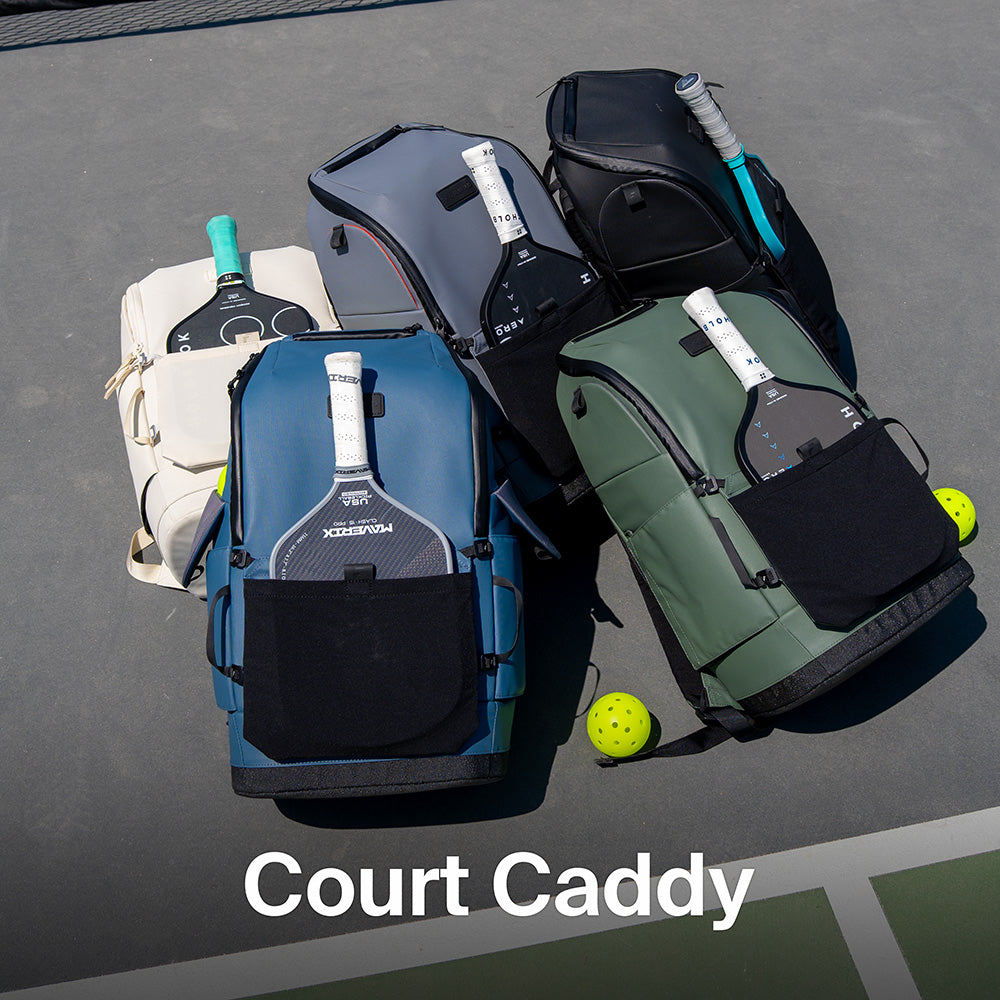
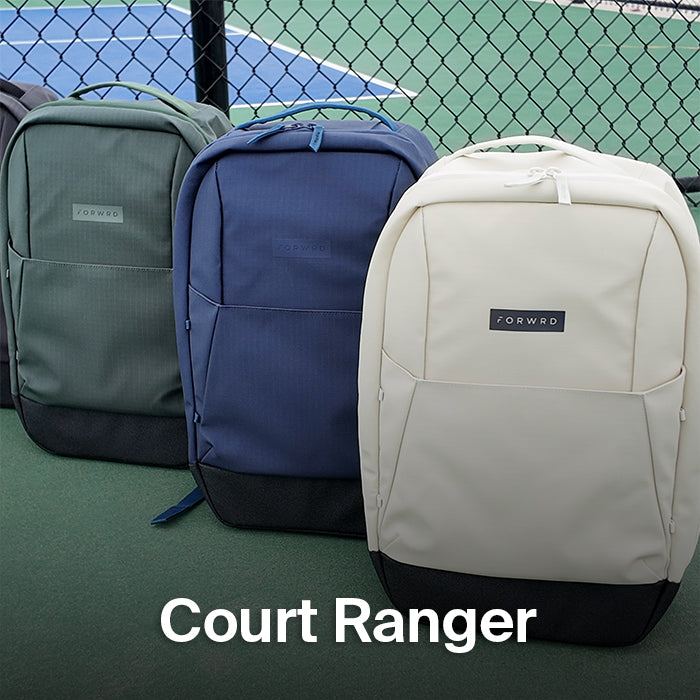
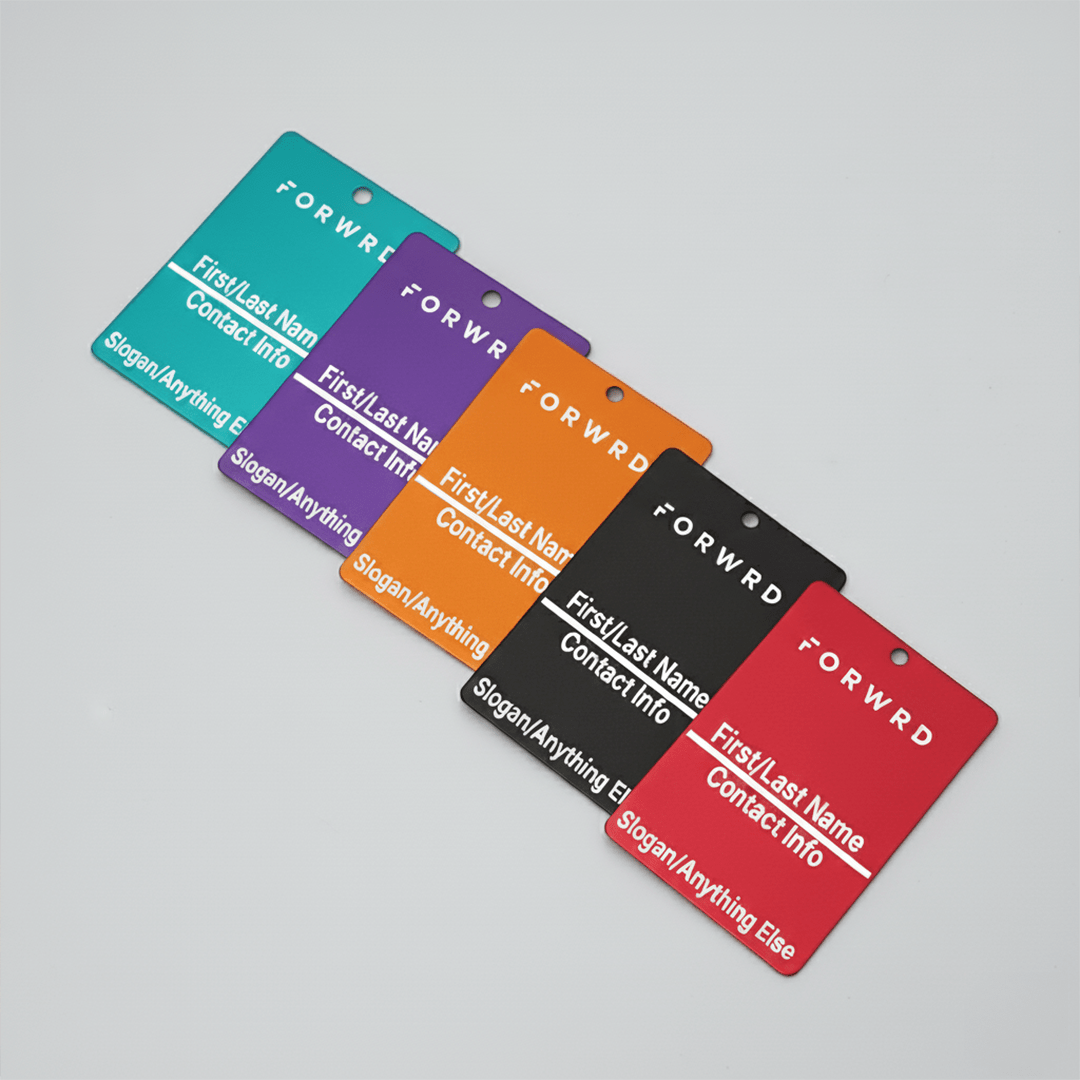
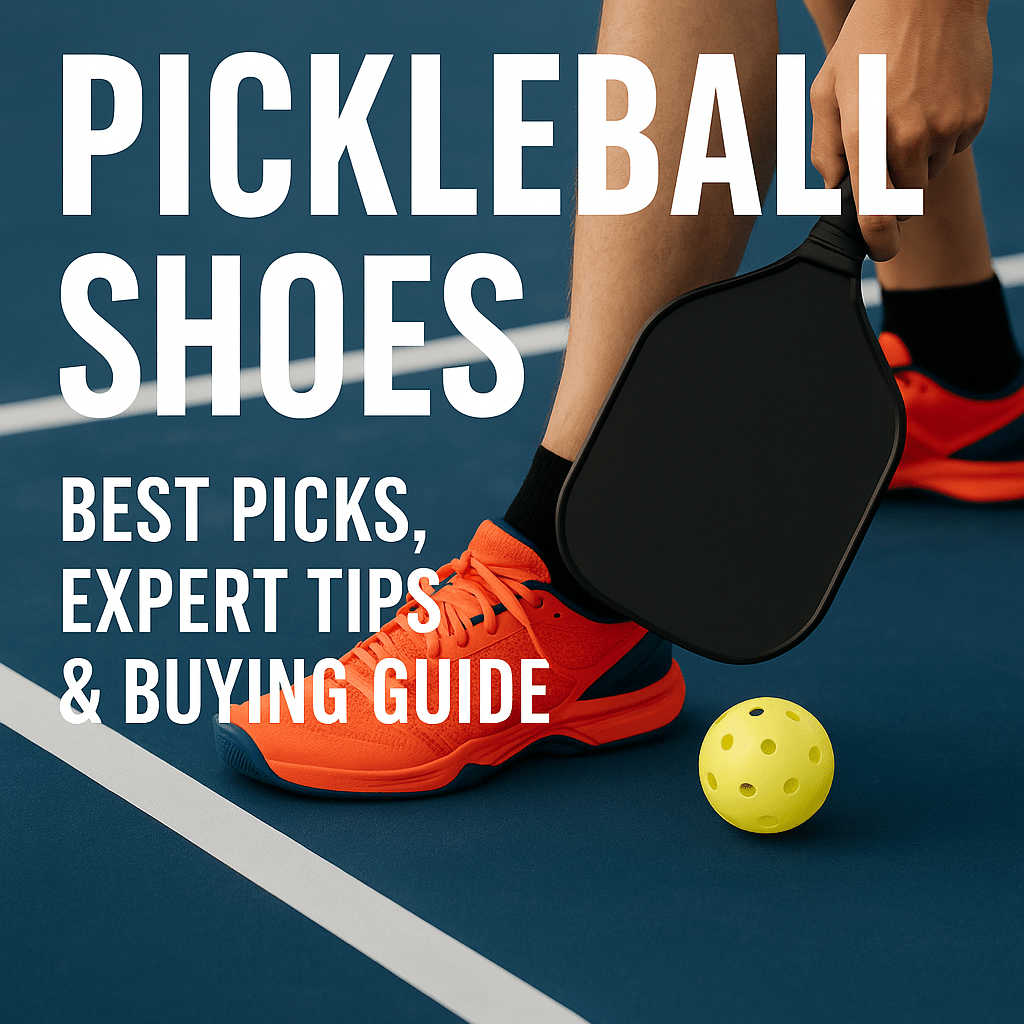
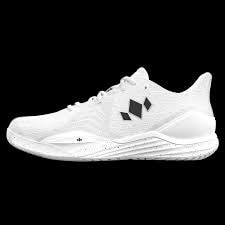


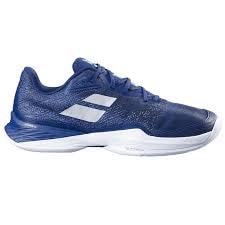
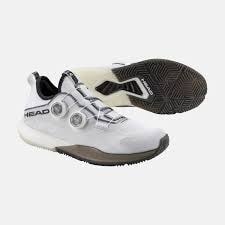
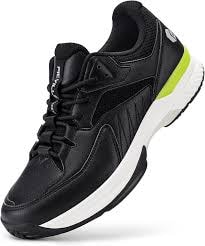

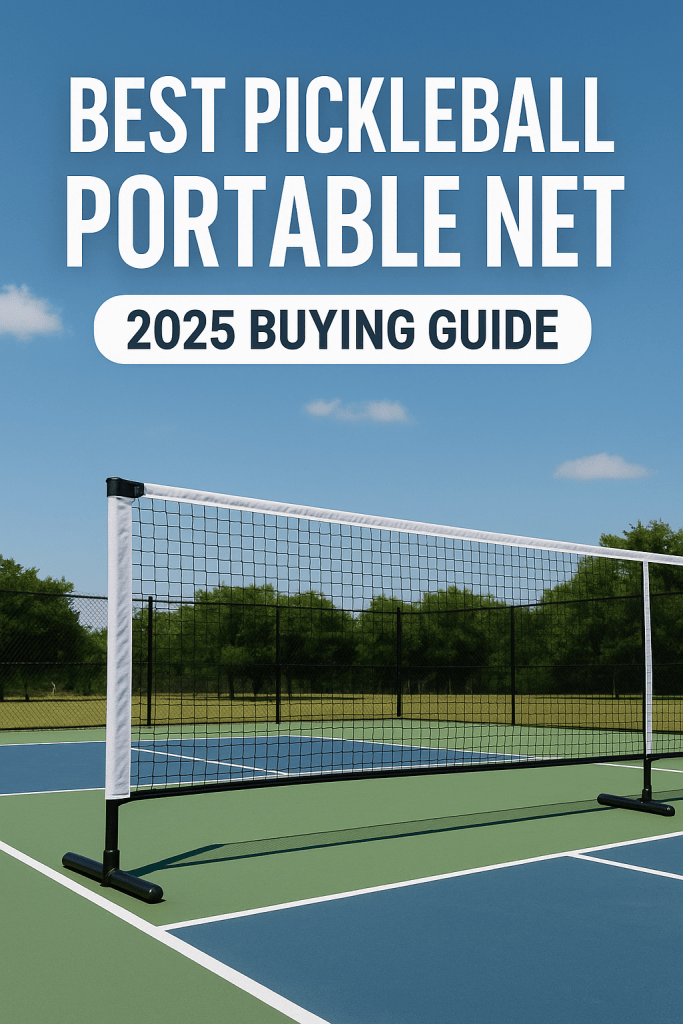
Leave a comment
All comments are moderated before being published.
This site is protected by hCaptcha and the hCaptcha Privacy Policy and Terms of Service apply.